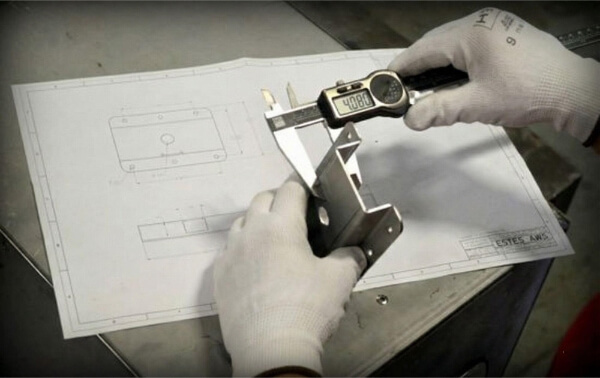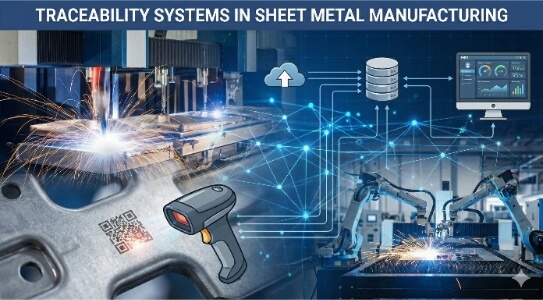يؤثر نمط ضميمة الصفائح المعدنية تأثيرًا كبيرًا على أداء المنتج في المجال. فكل هيكل يغير من قوته وتدفق الهواء وسلوك التداخل الكهرومغناطيسي الكهرومغناطيسي والأداء طويل الأجل. يحمي الإطار القوي الأجزاء الثقيلة. ينقل التصميم ذو التهوية الحرارة بعيداً عن اللوحات الحساسة. ويساعد الغطاء المحكم في تقليل الضوضاء ويحافظ على نظافة الإشارات ووضوحها. تشكل هذه الخيارات عملية البناء وخطوات الخدمة وثبات الوحدة النهائية.
يمكنك الحد من إعادة التصميم عند اختيار الهيكل المناسب في وقت مبكر. يقلل الاختيار الواضح من الضغط على المناطق الضعيفة ويتجنب مشاكل التبريد. يساعد التصميم البسيط في الحفاظ على استقرار التكاليف من خلال منع الخطوات غير الضرورية في المستقبل. يسهّل هذا النهج الانتقال السلس من النموذج الأولي إلى الإنتاج، مما يؤدي إلى تأخير أقل.
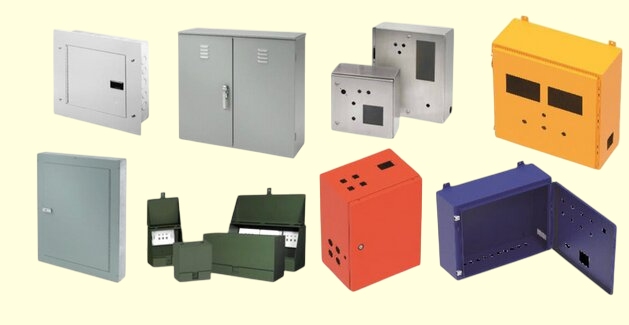
حاويات على شكل حرف U
ضميمة على شكل حرف U تستخدم قطعة واحدة مثنية لتشكيل القاعدة والجدارين الجانبيين. غطاء منفصل يغلق الجزء العلوي. يستوعب هذا التصميم سماكة المواد القياسية التي تتراوح من 0.8 إلى 2.0 مم من الفولاذ أو الألومنيوم. وتمتد الانحناءات على طول الحواف الطويلة، مما يسمح بتشكيل الجزء بسهولة ويظل ثابتًا أثناء الإنتاج.
يبدأ التصميم كصفيحة مسطحة. تستقر القاعدة في المنتصف، وينحني كلا الجدارين من الجانبين - غطاء قابل للإزالة يتم تركيبه بمسامير أو مشابك. يحافظ تصميم الثني البسيط على أبعاد ثابتة ويقلل من مشاكل التشكيل. يمكن لمعظم الورش ثني هذا الشكل باستخدام أدوات قياسية، مما يساعد على إبقاء التكاليف منخفضة.
مزايا
- تشكيل سريع بسبب انخفاض عدد الانحناءات
- مسار تدفق هواء واضح يدعم التبريد الطبيعي
- سهولة الوصول لإعادة العمل والتغييرات
- تركيب بسيط لمركبات ثنائي الفينيل متعدد الكلور والأجهزة
محددات
- قوة التوائية أقل
- تقليل الختم ما لم تتم إضافة حشيات
- مخاطر المرونة على الجدران العريضة أو الرقيقة
نصائح التصميم
استخدم حواف مرتجعة بقطر 10-15 مم لإضافة صلابة. تعمل الشفة في هذا النطاق بشكل جيد مع الألومنيوم والفولاذ الطري بسمك 1.0-1.5 مم تقريبًا. اختر نصف قطر الانحناء التي تناسب الأدوات. الدليل الجيد هو 1.0-1.5 × سُمك المادة، مما يقلل من التشقق عند الانحناءات الضيقة. حافظ على بدل ثني متساوٍ على كلا الجانبين. بالنسبة للفولاذ المدرفل على البارد 1.5 مم، 0.32-0.38 عامل K- عامل K يحافظ على عرض ثابت.
ضع ثقوب الموصلات على بعد 8-10 مم على الأقل من خطوط الانحناء. يساعد هذا التباعد على تجنب التشويه أثناء التشكيل. أضف أضلاع صغيرة أو خطوط منقوشة بعمق 1.0-2.0 مم إذا كنت بحاجة إلى صلابة إضافية على الجدران العريضة.
أفضل حالات الاستخدام
- الإلكترونيات الداخلية
- الأجهزة المنضدية
- النماذج الأولية السريعة
- وحدات التقييم أو الاختبار

حاويات على شكل حرف L
تستخدم الضميمة على شكل حرف L لوحين يلتقيان بزاوية قائمة. تغلق الألواح الإضافية الجوانب المتبقية. يعمل هذا التصميم بشكل جيد مع الشاشات ذات الزوايا أو اللوحات الأمامية التي تشير نحو المستخدم. يوفر الشكل مرونة أكبر في وضع الأزرار والمنافذ والشاشات.
تبدأ الضميمة بصفيحة واحدة تشكل كلاً من القاعدة والسطح الأمامي أو العلوي. يغلق الجانبان بألواح أو أقواس. يحمل الانحناء زاوية ثابتة بزاوية 90 درجة، مما يحافظ على ثبات الهيكل. يناسب هذا التصميم التخطيطات التي تحتاج إلى وجه مائل أو واجهة مستخدم مائلة.
مزايا
- تخطيط مرن عبر سطحين
- مساحة جيدة للأزرار والعروض والملصقات
- يدعم الأشكال غير المتساوية وعناصر التحكم المختلطة
محددات
- هناك حاجة إلى المزيد من أدوات التثبيت للوحات الجانبية
- التعزيز الإضافي ضروري للصلابة
- يلزم المزيد من التصنيع الآلي للميزات
نصائح التصميم
قم بتدعيم الانحناء الرئيسي بشفة مرتدة من 12-18 مم، خاصة للألومنيوم الذي يقل سمكه عن 2.0 مم. أضف دعامة صغيرة داخل الزاوية عندما تحمل الضميمة شاشة عرض أو جزء ثقيل. حافظ على نظافة مسارات الكابلات عن طريق وضع الأسلاك على طول الانحناء الداخلي. تحمي المنطقة المفتوحة من 15-20 مم الكابلات من القرص.
إذا كانت هناك حاجة لتدفق الهواء، ضع فتحات التهوية على الوجه الرأسي أو اللوحة السفلية. استخدم فتحات 4-6 مم متباعدة 8-10 مم عن بعضها البعض. ضع فتحات التثبيت الخاصة بأدوات تحكم المستخدم على بعد 10-12 مم على الأقل من الانحناء لتجنب التشوه أثناء الانحناء.
أفضل حالات الاستخدام
- وحدات التحكم
- لوحات الواجهة المختلطة
- الأجهزة ذات الشاشات أو الموصلات ذات الزوايا

حاويات محاطة بصناديق كاملة
تشكل الضميمة المحاطة بصندوق كامل هيكل مغلق بخمسة أو ستة جوانب. يمكن تشييده باستخدام براغي أو مفصلات أو الوصلات الملحومة. يحمي هذا التصميم المكونات من الصدمات والاهتزازات والغبار والماء. يضيف الشكل المغلق قوة ويدعم الأحمال الثقيلة.
تغلف الضميمة المنطقة الداخلية من جميع الجوانب. يوفر الباب المفصلي أو اللوحة القابلة للإزالة إمكانية الوصول للخدمة. توفر الدرزات الملحومة وصلات قوية، بينما توفر الإطارات الملولبة إصلاحًا أسهل. كما يدعم الشكل الصلب أيضاً إحكام الإغلاق والتأريض الثابت والسلوك الميكانيكي الموحد.
مزايا
- قوة إجمالية عالية
- مقاومة كبيرة للصدمات والاهتزازات
- يدعم ختم IP العالي أو NEMA
- تحكم معقول في التداخل الكهرومغناطيسي الكهرومغناطيسي مع نقاط تأريض
- تتعامل مع الوحدات الثقيلة وأجزاء الطاقة
محددات
- ارتفاع تكلفة التصنيع
- مخاطر التشويه من اللحام
- وصول محدود أثناء التجميع
نصائح التصميم
خطط لترتيب اللحام للتحكم في الحرارة. تبدأ الطريقة القياسية بلحامات قصيرة في الزوايا المتقابلة. هذا يقلل من الالتواء. بالنسبة للصلب الذي يتراوح سمكه بين 1.5 و3.0 مم، استخدم حبات لحام متداخلة للحفاظ على تسطيح اللوح.
اختر الحشيات حسب مستوى الختم. يعمل IP54 غالبًا مع النيوبرين 3-4 مم أو رغوة EPDM. قد تحتاج التصنيفات الأعلى إلى حشيات ذات خلايا مغلقة 5-6 مم مع ضغط قوي.
طابق سمك المادة مع الحمولة. غالبًا ما تحتاج المحولات الثقيلة إلى فولاذ بسمك 2.0-2.5 مم. يمكن للإلكترونيات الخفيفة استخدام فولاذ 1.0-1.2 مم أو ألومنيوم 1.5-2.0 مم. أضف أضلاع أو أقواس عند تحرك الوحدات أو اهتزازها لمنع التلف.
ضع مسامير التأريض بالقرب من المفصلات أو نقاط التركيب. يحافظ مسمار M4 أو M5 المزود بغسالة نجمية على اتصال مستقر ويساعد على تقليل ضوضاء التداخل الكهرومغناطيسي الكهرومغناطيسي.
أفضل حالات الاستخدام
- خزانات التحكم الصناعية
- المعدات الخارجية
- أنظمة متينة
- وحدات طاقة عالية التحميل
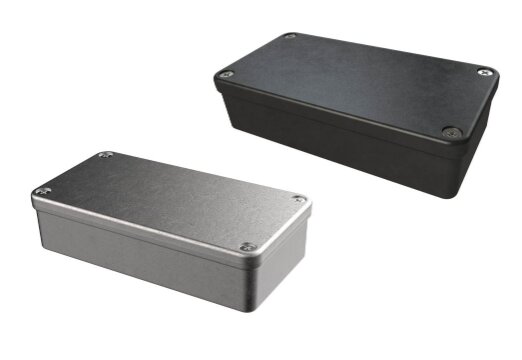
حاويات مثبتة على حامل
الضميمة المثبتة على الحامل تتبع معايير الحامل مقاس 19 بوصة. يقاس الارتفاع بوحدات ثابتة، مثل 1U أو 2U أو 4U. يتضمن التصميم آذان اللوحة الأمامية ومسارات تدفق الهواء والقضبان الداخلية. يدعم هذا الشكل التكامل النظيف في رفوف المعدات.
يبقى العرض ثابتاً عند 482.6 مم (19″). تبلغ درجات الارتفاع 44.45 مم لكل وحدة. تتميز الضميمة بلوحة أمامية مزودة بأذنين للتركيب. القضبان أو الصواني تحمل اللوحات والوحدات. توجه مسارات تدفق الهواء التبريد من الأمام إلى الخلف. يتم تثبيت الهيكل في الحامل، مما يضمن ثبات النظام.
مزايا
- ملائمة سلسة في الرفوف القياسية
- توجيه الكابلات النظيفة
- مسارات تدفق الهواء التي يمكن التنبؤ بها
- سهولة التوسع السهل لعائلات المنتجات
محددات
- عرض خارجي ثابت
- تتطلب فتحات الحامل محاذاة دقيقة
- غير مناسب للبيئات المغلقة
نصائح التصميم
خطط لتدفق الهواء مبكراً. التبريد من الأمام إلى الخلف هو الأكثر فعالية للأنظمة الكثيفة. استخدم ثقوبًا أو فتحات 3-5 مم أو فتحات متباعدة من 6-8 مم على اللوحة الأمامية لسحب الهواء. حافظ على مسار تدفق الهواء مفتوحًا حول اللوحات المنتجة للحرارة.
قم بتعزيز اللوحة الأمامية بالألومنيوم 1.5-2.0 مم أو 1.2-1.6 مم، خاصة للوحدات 2U-4U. أضف أقواس دعم بالقرب من الأذنين لمنع الترهل في المقدمة.
ضع المقابض حيث يبقى الحمل متوازناً. اجعلها على بُعد 40-50 مم من الحواف العلوية أو السفلية للحصول على قبضة محكمة. بالنسبة للأنظمة التي يزيد وزنها عن 12-15 كجم، استخدم الأقواس الخلفية أو القضبان المنزلقة.
أفضل حالات الاستخدام
- الخوادم
- أدوات المختبر
- أنظمة البيانات
- أجهزة الاتصالات والشبكات
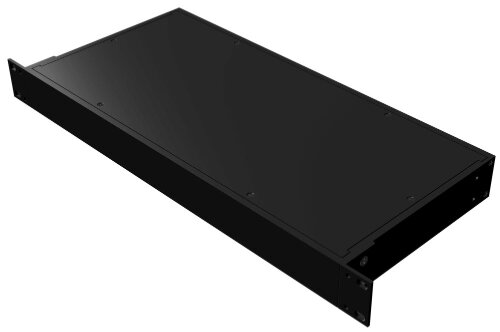
حاويات مثبتة على الحائط/في الهواء الطلق
يتم تثبيت الضميمة المثبتة على الحائط أو الضميمة الخارجية على مبنى أو عمود أو لوحة باستخدام أقواس أو فتحات تثبيت. يتضمن الهيكل باباً ومجموعة مفصلات وحشية وغالباً ما تكون عازلة. وهي تحمي الإلكترونيات من الطقس وأشعة الشمس والإجهاد الميكانيكي.
تشكل الضميمة صندوقًا مغلقًا بباب مفصلي أو قابل للإزالة. تمتد حشية حول الفتحة لحجب الغبار والماء. تستقر نقاط التركيب على اللوحة الخلفية أو على أقواس خارجية. يستخدم مدخل الكابل غدد محكمة الغلق أو فتحات مغلقة. يساعد العزل على التحكم في تقلبات درجة الحرارة.
مزايا
- مقاومة قوية للتآكل
- توفير المساحة من خلال التركيب على الجدران
- يدعم الأقفال والمزالج الآمنة
- يتعامل مع أشعة الشمس والمطر والإجهاد الخارجي
محددات
- تحد قوة الجدار من الحجم والحمل
- تكلفة أعلى بسبب الطلاءات وموانع التسرب
نصائح التصميم
تجنب مدخل الكابل السفلي إلا إذا كنت تستخدم غدة محكمة الغلق مصنفة للاستخدام الخارجي. تتجمع المياه في النقاط المنخفضة. استخدم حلقات التنقيط بحيث يتم تصريف المياه قبل وصولها إلى الغدة. استخدم الغدد الضاغطة M20 أو M25 لمعيار IP65 أو أعلى.
اختر مفصلات قوية. تعمل المفصلة المصنوعة من الفولاذ المقاوم للصدأ مع مسمار 3-4 مم بشكل جيد للفتح والإغلاق المتكرر. تحتاج الأبواب الكبيرة إلى مفصلتين أو ثلاث مفصلات متباعدة بشكل متساوٍ. يحسن سمك طلاء المسحوق الذي يتراوح بين 70-90 ميكرومتر من المتانة في الأماكن الخارجية.
حافظ على خلوص 20-30 مم حول نقاط الدخول للوصول إلى الأدوات. إذا تراكمت الحرارة، أضف فتحات تنفيس بحجم 4-6 مم في المناطق العلوية والسفلية، مزودة بمرشحات للحشرات.
أفضل حالات الاستخدام
- صناديق الاتصالات
- أنظمة الأمان
- أجهزة التحكم في التدفئة والتهوية وتكييف الهواء
- الإلكترونيات المثبتة في المباني

حاويات معيارية / متعددة المقصورات
حاوية معيارية أو متعددة المقصورات تقسم المساحة الداخلية إلى مناطق منفصلة. تتعامل كل منطقة مع وظيفة مختلفة. وتبقى أقسام الطاقة والإشارة والتحكم والاتصالات منفصلة. يحافظ هذا الهيكل على الضوضاء والحرارة والأسلاك تحت السيطرة. كما أنه يحسن السلامة عند وجود مكونات الجهد العالي بالقرب من المناطق المنطقية ذات الجهد المنخفض.
تستخدم الضميمة فواصل لإنشاء حجرات منفصلة. لكل حجرة منطقة تركيب خاصة بها ومسار تدفق الهواء ومسار الأسلاك. يمكن إزالة بعض الأقسام بسهولة للخدمة. والبعض الآخر ملحوم لعزل أقوى. وتستخدم ممرات الكابلات الحلقات أو الثقوب محكمة الغلق للحفاظ على بيئة نظيفة ومضبوطة لكل منطقة.
مزايا
- تقسيم حراري واضح
- انخفاض مشاكل التداخل الكهرومغناطيسي المنخفض
- تباعد آمن بين مناطق الجهد العالي والمنخفض
- أسلاك نظيفة ومنظمة
محددات
- المزيد من المواد المستخدمة
- المزيد من اللحام أو التثبيت
- وقت تجميع وتوصيل أسلاك أطول
نصائح التصميم
حدد سمك الفاصل بناءً على متطلبات التحكم في الحمل والضوضاء. المقسم الفولاذي 1.2-1.5 مم مناسب لمناطق الإشارات الخفيفة. يعمل الفاصل 1.5-2.0 مم بشكل أفضل لمناطق الطاقة.
خطط مسارات الكابلات مع وضع التباعد في الاعتبار. أبقِ خطوط الإشارة وخطوط الطاقة متباعدة. إذا كان يجب أن يشترك كلاهما في ممر واحد، احتفظ بمسافة 25-30 مم على الأقل بينهما. استخدم الحلقات ذات الخلوص 20-30 مم لحركة الكابلات بأمان.
خطط لتدفق الهواء بعناية. استخدم فتحات 4-6 مم أو فتحات تهوية مصفاة عند الحاجة إلى تبريد مشترك. إذا كانت هناك منطقة واحدة فقط تسخن، أضف مروحة صغيرة أو فتحات تهوية في تلك الحجرة. حافظ على تدفق الهواء محلياً لمنع انتشار الحرارة.
أضف مسامير التأريض إلى كل غرفة. ويساعد مسمار M4 البسيط على تقليل الضوضاء وتثبيت التأريض لكل منطقة.
أفضل حالات الاستخدام
- إلكترونيات الإشارات المختلطة
- وحدات تحكم ذكية
- الأجهزة ذات أقسام الطاقة والمنطق
- الأنظمة التي تحتاج إلى مسارات أسلاك نظيفة
| نمط الضميمة | قوة الهيكل | المقاومة البيئية | مستوى التكلفة | قابلية التصنيع | سهولة الوصول | التطبيقات الموصى بها |
|---|---|---|---|---|---|---|
| على شكل حرف U | متوسط | منخفضة-متوسطة | قليل | سهل جداً | عالية جداً | النماذج الأولية، والأجهزة المنضدية، ووحدات التقييم |
| على شكل حرف L | متوسط | متوسط | متوسط | سهولة | عالي | وحدات التحكم، واللوحات ذات الزوايا، والواجهات المختلطة |
| محاصر بالكامل | عالي | عالي | عالي | متوسطة-متوسطة الصلابة | قليل | الخزانات الصناعية، والوحدات الخارجية، والأنظمة المتينة |
| تركيب على حامل | متوسط-عالي | قليل | متوسط | متوسط | متوسط | الخوادم ومعدات المختبرات وأجهزة الاتصالات |
| التثبيت على الحائط/خارجي | عالي | عالي | متوسط-عالي | متوسط | متوسط | الأنظمة المثبتة في المبنى، وأنظمة التدفئة والتهوية وتكييف الهواء، والأمن، وصناديق الاتصالات |
| وحدات معيارية/متعددة المقصورات | عالي | متوسط-عالي | متوسط-عالي | متوسطة-متوسطة الصلابة | متوسط | أنظمة الإشارات المختلطة، ووحدات التحكم الذكية، وأجهزة الطاقة + المنطق |
عوامل الهندسة الرئيسية لاختيار النمط المناسب
اختيار نمط الضميمة يعمل بشكل أفضل عندما تربط المتطلبات الحقيقية بالهيكل المناسب. تساعدك هذه العوامل على تحقيق هذا التطابق.
تخطيط المكونات وتخطيط المساحات
ابدأ بشكل مركبات ثنائي الفينيل متعدد الكلور وارتفاعها. اترك مساحة للأجزاء الطويلة والمواجهات. أضف فجوة أمان بمقدار 5-10 مم فوق الجزء الأطول. حافظ على مسارات الكابلات مباشرة وافصل الطاقة عن خطوط الإشارة - خطط مناطق تدفق الهواء حول الأجزاء الساخنة. قم بإنشاء مسار واضح لدخول الهواء وخروجه من الضميمة.
المتطلبات البيئية والميكانيكية
تحقق من مستويات الغبار والماء والمواد الكيميائية والاهتزازات حول منتجك. اختر نمطاً يمكنه التعامل مع هذه الحدود. استخدم تصميمات محكمة الغلق للأماكن الخارجية أو المتسخة. استخدم إطارات أقوى لمخاطر الصدمات أو السقوط. طابق الحمل الحراري مع لوحات التهوية أو المراوح أو وسادات التوصيل. حافظ على اتجاه تدفق هواء ثابت ومباشر.
متطلبات التصديق
يجب أن تجتاز العديد من الأنظمة اختبارات السلامة واختبارات التداخل الكهرومغناطيسي الكهرومغناطيسي. وتحتاج تصنيفات IP أو NEMA العالية إلى ختم قوي ووصلات محكمة. تؤثر قواعد التداخل الكهرومغناطيسي الكهرومغناطيسي على طبقات اللوحة والتأريض وحجم الفتحة. تحدد قواعد السلامة الكهربائية التباعد بين الأجزاء ذات الجهد العالي والجهد المنخفض. وغالبًا ما تشجع هذه القواعد المصممين على اعتماد هياكل محاطة بصناديق أو وحدات.
معوقات التصنيع
يجب أن يتشكل التصميم بشكل جيد على الماكينات الحقيقية. عد الانحناءات وتحقق من مسافاتها من الثقوب. الأشكال البسيطة تتشكل بشكل أسرع ومخاطرها أقل. تعطي الإطارات الملحومة قوة ولكنها تضيف تكلفة وتتطلب تحكمًا معقولاً في الحرارة. يتم تجميع التصميمات المثبتة بشكل أسرع ويتم إصلاحها بسهولة. اختر تشطيبًا يناسب الشكل الهندسي. ضع في اعتبارك تكدس التفاوت في السلاسل الطويلة أو الملحومة أو المثنية. الهياكل الأبسط تحمل أبعادًا أكثر إحكامًا.
التوصيات النهائية
يعالج كل نمط ضميمة متطلبات هندسية متميزة. يأتي الاختيار الصحيح من التوافق الدقيق بين المساحة، وتدفق الهواء، ومانع التسرب، وحدود الإنتاج. ابدأ بإدراج الاحتياجات الأساسية لنظامك. تحقق من حجم اللوحة والحمل الحراري ومسارات الأسلاك والبيئة. ثم قارن هذه الاحتياجات مع نقاط القوة لكل هيكل.
اختر إطارات على شكل حرف U أو على شكل حرف L للبناء السريع والوصول المفتوح. انتقل إلى أنماط محاطة بصناديق أو مثبتة على الحائط عندما تحتاج إلى حماية قوية أو مانع تسرب خارجي. استخدم تخطيطات التركيب على حامل أو تخطيطات معيارية عندما يجب دمج النظام في بيئة أكبر أو عند الحاجة إلى مناطق طاقة وإشارة منفصلة. يساعدك التطابق الجيد في مرحلة مبكرة من التصميم على تجنب إعادة التصميم وخفض التكلفة وتسريع الإنتاج.
إرسال ملفات CAD أو الرسومات الخاصة بك للحصول على مراجعة هندسية سريعة وعرض أسعار دقيق. يمكننا مساعدتك في تحسين التصميم الخاص بك، واختيار نمط الضميمة المثالي، وتسريع عملية الإنتاج.
مهلا، أنا كيفن لي

على مدى السنوات العشر الماضية، كنت منغمسًا في أشكال مختلفة من تصنيع الصفائح المعدنية، وشاركت رؤى رائعة هنا من تجاربي عبر ورش العمل المتنوعة.
ابقى على تواصل

كيفن لي
لدي أكثر من عشر سنوات من الخبرة المهنية في تصنيع الصفائح المعدنية، وتخصصت في القطع بالليزر، والثني، واللحام، وتقنيات معالجة الأسطح. كمدير فني في شنغن، أنا ملتزم بحل تحديات التصنيع المعقدة ودفع الابتكار والجودة في كل مشروع.

